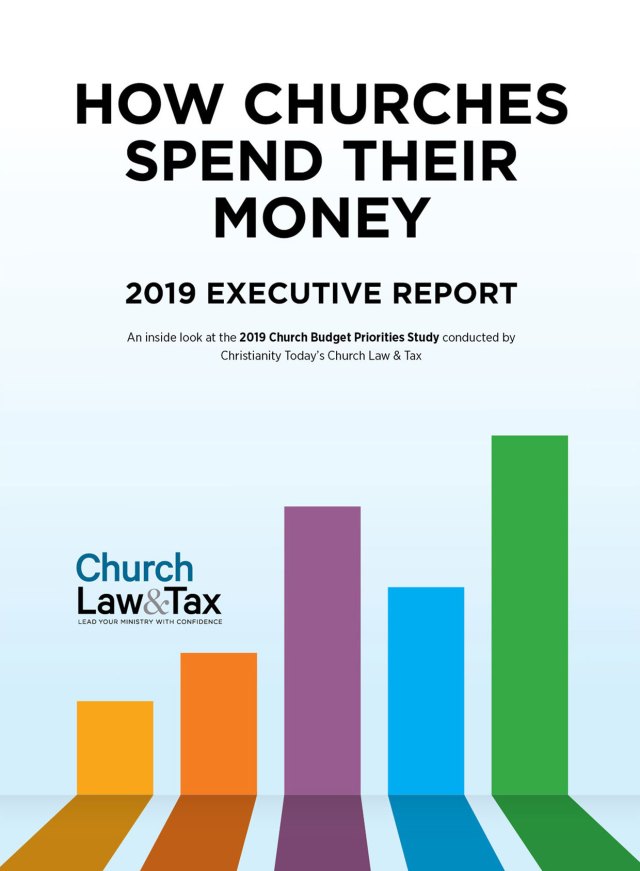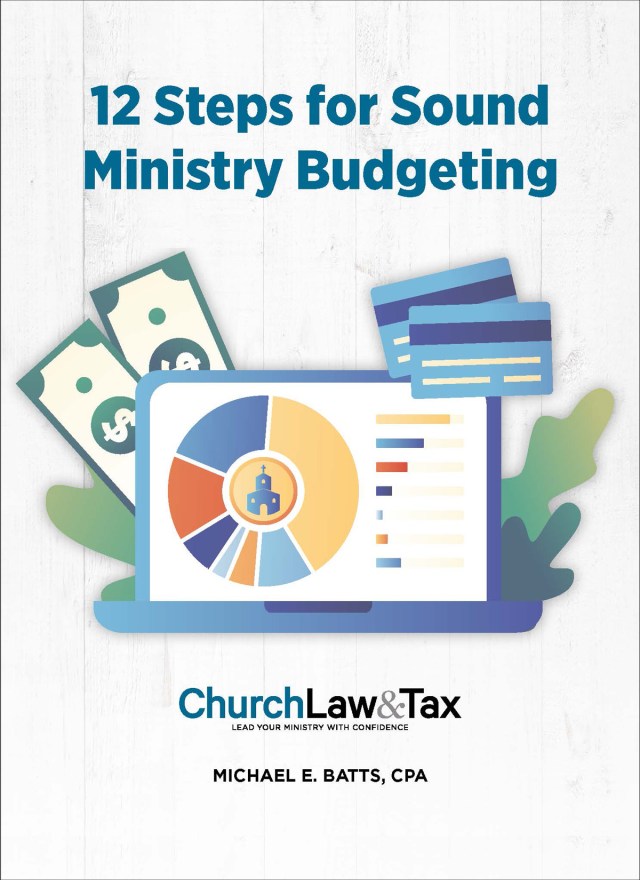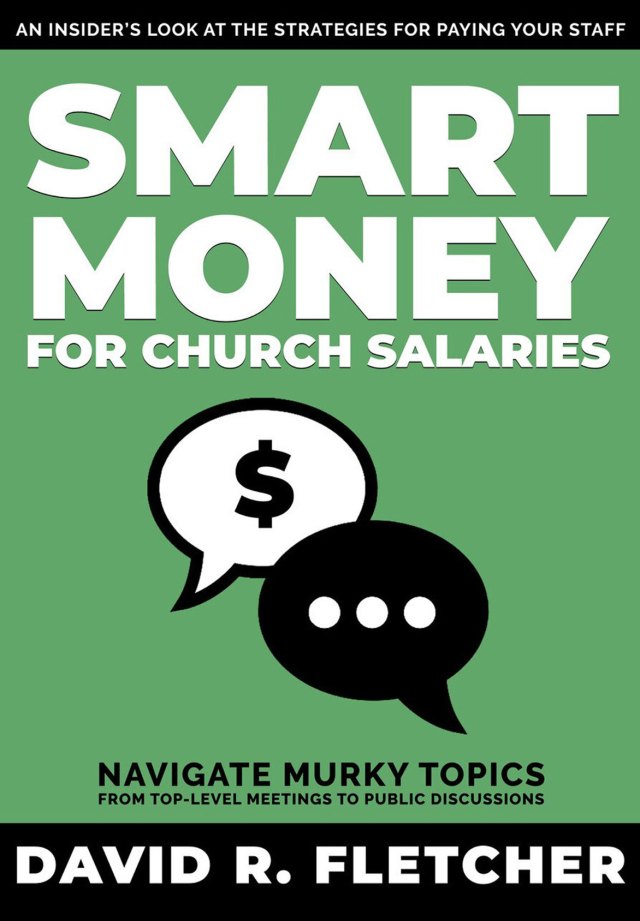Cottonwood Church, a congregation of 150 in Rio Rancho, New Mexico, has reason to celebrate. For the first time since 2009, the church will be able to give raises to two of its three paid staff members.
“I am employed full-time as senior pastor,” says Dan Cooley of Cottonwood. “We also have a part-time worship pastor, and an administrative assistant who works 12 hours a week. In 2013, we saw slow but steady growth in both our attendance and finances. The budget for 2014 gives the worship pastor and me a 4 percent cost-of-living raise.”
After seven years of cutting expenses and salaries to keep the ministry afloat, this uptick is a boon to Cottonwood.
“In 2007 we were meeting in a shopping center,” says Cooley. Cottonwood’s monthly building expenses hovered around $5,200 a month. When the church’s lease came due in 2008, Cooley says the church decided to “go portable” in order to live lean and give more. It started meeting in a school in December 2008—right about the time the economy crashed. That next year, six other small churches in the area closed. Cottonwood Church survived because it lowered its monthly property expenses to about $1,800, but the church still was rapidly eating through its savings.
“In 2010 the worship pastor and I took a cut in pay, as our savings were almost depleted,” says Cooley. “We thought it wiser to cut salaries than ministries—and there was nothing in property left to cut.”
New Mexico’s economy bottomed out in 2011, a bit later than the rest of the nation, according to Cooley. “We limped through the same lean budget from 2010-2013. In the midst of this crunch, we raised $10,000 for a well in one of our parishioner’s hometown in Haiti. I believe this extra act of giving helped to spark hope for our own church and budget.”
The good news for 2014: The 4 percent pay increase for Cooley and his worship pastor will bring them close to what they earned before the 2010 salary cuts. The bad news: Due to the new healthcare law, the church is no longer able to offer health insurance to them.
“The $500 a month increase is more than the church can handle,” says Cooley. “They’re simply rolling my old insurance payment into my pay for 2014 and no longer providing insurance.”
Cooley’s experience is not unique. Christianity Today’s biannual compensation survey of approximately 7,500 paid staff from more than 3,500 churches, reveals that church staff salaries are continuing their steady (albeit, slow) rise across the country.
According to survey findings, which are published in the 2014-2015 Compensation Handbook for Church Staff, compensation levels for all staff positions grew by an average of 19 percent, with the greatest increases reported by churches with the biggest budgets (from $751,000 to over $1,000,000).
This is a reassuring continuation of the growth observed in the 2012-2013 edition of the survey, which revealed the first signs of economic recovery for churches since the start of the Great Recession. But like Cooley experienced, increased healthcare costs—and the recent housing allowance ruling—may erode any gains in pay.
“Health insurance is the wild card of compensation, especially now when it seems hardly anyone understands the impact of the Affordable Care Act,” says Lee Eclov, senior pastor of Village Church in Lincolnshire, a suburb of Chicago. “Larger churches have been able to get group health plans, with the costs fairly low because of younger staff. Some denominations have health plans, of course, but churches with only one or two staff with no access to group plans have been vulnerable,” says Eclov. “My own independent health policy, at age 62, has been very expensive. Our church used to guarantee coverage. Now they offer me an additional 25 percent of my salary and housing allowance to apply to benefits in whatever way I choose. I worry that health insurance may eat up much of that,” he says.
Right-sizing salaries
The compensation for senior pastors, one of the most highly paid positions in the local church, exemplifies this upward trend. The majority of senior pastors (51 percent) received salary increases in the past year—11 percent more as compared to the previous study.
In 2009, senior pastors earned an average of $80,745 in pay and benefits. 2011 showed an uptick of 2.7 percent for an average of $82,938. This year shows the greatest improvement yet—senior pastors’ average compensation increased by 7.1 percent to $88,814 in pay and benefits, 4.4 percentage points higher than the previous survey’s report. These numbers demonstrate that not only are senior pastors’ salaries growing, but they are increasing at progressively higher rates since the end of the recession. This increase in economic momentum is slight, but it’s moving in an encouraging direction.
Additionally, 3 out of every 5 executive pastors, who tend to serve in larger churches, received a pay increase over the last year, 16 percentage points higher than the 2011 study. Only 38 percent of solo pastors, who serve in smaller churches, received a salary increase, but that’s still 8 percentage points higher from 2 years ago.
At Church of the Resurrection in Wheaton, Illinois, the recession of 2008 kept staff salaries nearly flat for three years. “Then we entered a building program, which kept them flat for two more years,” says Kevin Miller, associate pastor and an editorial advisor for Church Finance Today. “So for 2014, our vestry (church board) is working to right-size staff salaries.”
Geoff Chang, associate pastor of Hinson Baptist Church in Portland, Oregon, says, “Compensation in general is going up across the board, though it has varied depending on position. The elders made a priority of providing for the associate pastors in a way that would allow us to stay here longer term. But we’ve also worked to improve the compensation for our admin staff. We’re not where we want to be in this area, but we’re getting there!”
More churches meeting budget
Many churches are also “getting there” on meeting budgets. Nearly 2 in 5 churches report receiving offerings that exceeded expenses, a 44 percent increase over two years ago. An equal number (38 percent) reports giving levels that met their expenses this year.
For Hinson Baptist, Chang says, “Our budget has been flat, though we’re grateful that we’ve met the budget this past year, for the first time in decades. Part of that is tighter fiscal control, more responsible budgeting. But part of it is also the faithful giving of the congregation.”
Kathryn Callahan-Howell, senior pastor of Winton Community Free Methodist Church in Cincinnati, Ohio, says, “Our compensation has not changed this year, however our giving is up, which may lead to an increase in 2014.”
On average, the survey showed 48 percent of a churches’ budget is devoted to salaries.
While nearly half (45 percent) the churches surveyed report that attendance is stable, 37 percent show an increase in attendance compared with 18 percent reporting a decline.
Benefits boost compensation packages
Nearly 9 in 10 full-time senior pastors receive a housing allowance, which accounts for an average of about a third of their overall compensation, and 64 percent receive health insurance benefits. Callahan-Howell says she receives a housing allowance and flexible benefits—medical and mileage only. Though the effects of the recent federal ruling on housing allowance for clergy are not fully known yet, a loss of this popular benefit would have significant ramifications for clergy, many of whom depend on this key tax advantage.
About 1 in 3 churches (31 percent) provide additional salary to their senior or solo pastors to assist with their Social Security payments. Of churches that help, 78 percent pay half of the Social Security tax, while 22 percent pay all of it. Seven in 10 churches reimburse about 80 percent of a senior or solo pastor’s professional expenses. More than 6 in 10 (62 percent) churches help their senior or solo pastor with auto expenses.
Benefits vary significantly between positions, especially for health insurance and retirement programs. The number of church staff members receiving health insurance varied from 42 percent to 71 percent, depending on the position. Between 41 percent and 67 percent of staff members receive retirement benefits. Very few part-time positions receive fringe benefits, such as health insurance or retirement, but many receive paid vacation.
“Salaries are not the only way churches can compensate their pastors,” says Eclov. “An extra week of vacation may actually cost the church very little but mean a great deal. Church leaders often forget that a pastor never gets a weekend off like most other people. We can’t just skip church some weekend and go camping! Small kindnesses—like a pastor appreciation emphasis in October—affirm a pastor’s value even when his or her salary doesn’t do so adequately.”
More housing for youth pastors
A few notable changes in benefit compensation stood out this year. One in 4 part-time youth pastors receive housing benefits—about triple the number in 2011. And an equal number of full-time custodians received auto reimbursements in 2013, nearly double what was reported in the previous study.
While more youth pastors are enjoying the tax advantage of a housing allowance, the recent federal ruling could jeopardize this benefit for many in the future.
Education affects income for some
It appears that fewer pastors are attaining secondary degrees. The percentage of senior pastors who have graduate degrees dropped 4 percentage points, from 72 percent in 2011 to 68 percent in 2013. Senior pastors who earn a doctorate after their master’s degree not only garner more pay, but also lead churches with greater annual incomes. This correlation between education and salary is not as noticeable for other staff positions.
Gender gaps
As in previous studies, female staff members received significantly lower compensation than their male counterparts. On average, men earned 29 percent more than females.
Full-time male senior pastors receive 40 percent more in compensation plus benefits than females, who only account for 3 percent of senior pastor positions. This pay disparity could be due to the fact that, on average, women serve in smaller churches and churches with a lower average income, both factors that determine higher compensation. This difference may also be explained on the basis of demographic factors, such as education.
The 2013 survey reveals that female children’s pastors do not earn more than male children’s pastors in full-time positions, even though women account for 72 percent of these jobs.
Another noticeable pay gap: male adult ministry pastors make 50 percent more than their female counterparts, and male executive pastors make 46 percent more.
Location matters
Senior pastors serving churches in suburban or metropolitan settings have the highest compensation and benefits packages, perhaps because these churches typically have a higher budget and worship attendance than churches in small towns and farming areas.
“Our church, with attendance of around 200 in the expensive northern suburbs of Chicago, has to pay higher than average just to allow us as pastors to live in the area,” says Eclov. He says his church hopes to pay its staff in the top one-fourth of the range for its area based on the Compensation Handbook findings.
About 4 in 10 senior pastors serve churches in a small town/rural city setting (41 percent) or suburb of a large city (37 percent). New England and the West-South Central region offer the best average compensation packages, hovering around $96,700 in both areas. By comparison, senior pastors in the East-North Central and Mountain regions report the lowest average compensation and benefits packages at $82,516 and $81,523 respectively.
The human factor
According to Eclov, churches have long struggled to find standards for pastoral salaries. His church relies on data in the Compensation Handbook to match demographic factors, such as education, experience, and responsibility to get an accurate comparison.
“Hidden behind these numbers, of course, are human factors,” Eclov says. “For example, measures of good work are notoriously difficult in the ministry. How do you do an adequate job review for a shepherd of God’s flock? Growth in numbers is a very fickle and unreliable measure. How do you measure a church that is growing in holiness, or affirm a pastor who has had to bear the loss of an inordinate number of people who have moved or been laid off and cut back on giving?”
While the Compensation Handbook provides data points to help guide compensation decisions, Eclov’s right—there’s no statistical measure for compensating church leaders according to the number of saved souls.





